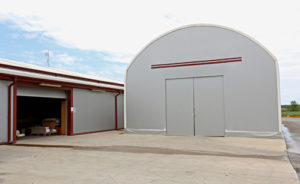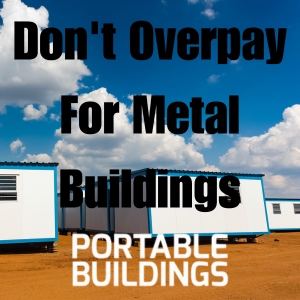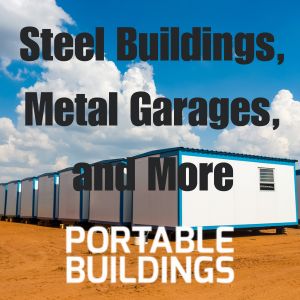
Storage sheds are not just a place to dump your tools and forget about them. With the right customization, they can transform into highly organized, efficient spaces that cater to specific storage needs, whatever your industry may be. Here’s how you can tailor your large storage shed to meet your exact requirements, complete with examples of shelving, climate control, and organizational systems.
Understanding Your Storage Needs
Before diving into customization, it’s important to assess what you’ll be storing. Heavy machinery? Delicate electronics? Bulk materials? Your storage needs will dictate the type of customization you’ll undertake.
Shelving Solutions
- Adjustable Shelving: No two items are the same size, and your storage solutions should reflect that. Adjustable shelving allows you to modify shelf height to accommodate items of varying dimensions, making the most of your vertical space.
- Heavy-Duty Shelving: For those storing heavier items, like construction materials or large tools, heavy-duty steel shelving can bear substantial weight and withstand the daily wear and tear of industrial use.
- Wall-Mounted Racks: When floor space is at a premium, wall-mounted racks can be a game-changer. These are ideal for hanging tools, equipment, and even bikes, keeping them off the ground and within easy reach.
Climate Control Features
- Insulation: Proper insulation is key to protecting stored items from extreme temperatures. Insulating the walls, ceiling, and floors can maintain a consistent temperature and prevent damage to sensitive materials.
- HVAC Systems: For a shed storing temperature-sensitive items, installing a small HVAC system can be a worthy investment. Portable air conditioners or heaters can also be used for a more cost-effective solution.
- Dehumidifiers: To prevent moisture damage and control humidity levels, especially in areas prone to dampness, a dehumidifier can be crucial.

Organizational Systems
- Pegboards: A classic organizational tool, pegboards can keep tools organized and accessible. With a variety of hook sizes, they’re incredibly versatile and can be rearranged as needed.
- Magnetic Strips: For metal tools and bits, magnetic strips are an excellent way to keep small items from getting lost and to keep sharp objects out of harm’s way.
- Drawer Units: Small components or tools can be stored in drawer units with labeled compartments, making it easy to find what you need without rummaging through piles of equipment.
- Storage Bins and Containers: Clearly labeled bins and containers can be stacked or stored on shelves, making the organization of small to medium-sized items a breeze.
Security Customizations
- Locking Systems: From simple padlocks to sophisticated keyless entry systems, securing your shed against unauthorized access is essential.
- Windows and Lighting: Install windows to allow natural light in, reducing the need for electrical lighting, and providing visibility. Adequate lighting is also important for security and ease of locating items.
Enhancing Accessibility
- Ramps and Access Points: Customizing your storage shed with ramps can greatly improve accessibility. This is especially useful for heavy machinery or carts that need to be moved in and out of the shed frequently. Ensuring that doors are wide enough to accommodate large items is also crucial.
- Roll-Out Bins and Drawers: For items that are heavy or awkward to lift, roll-out bins and drawers can make access easier. They allow you to bring the contents to you, reducing strain and improving efficiency.
Lighting and Electrical Customizations
- Energy-Efficient LED Lighting: Good lighting is essential in a storage shed, not just for finding items quickly but also for safety. LED lighting is energy-efficient and can provide bright, clear light to illuminate the entire interior of your shed.
- Electrical Outlets: Depending on what you’re storing, you may need power tools or the ability to charge equipment. Having a professional install electrical outlets can turn your shed into a functional workspace as well.
Aesthetics and Working Environment
- Interior Finishes: A shed’s interior doesn’t have to be bare-bones. Adding drywall, painting the interior, or installing durable flooring can make the space more inviting and easier to clean.
- Exterior Match: Your storage shed can also be customized to match the exterior of your business premises, creating a seamless look that maintains the professional appearance of your property.
Tech and Smart Features
- Smart Locks: With smart locks, you can control access to your shed remotely and monitor who opens it and when, providing both security and data on usage.
- Environmental Monitoring: Smart sensors can measure temperature, humidity, and even detect water in case of leaks, giving you real-time alerts to protect your stored items.
Legal and Compliance Factors
- Building Codes and Compliance: Ensure that your customization adheres to local building codes and zoning laws. This can prevent legal issues and ensure that your storage solution is up to par with safety standards.
- Insurance: After customizing your storage shed, updating your insurance policy to cover the added features and their contents is a smart move. This ensures you’re protected in case of damage or theft.
A storage shed is much more than a simple structure; it can be a tailored solution, crafted to meet the precise needs of your business. The possibilities are vast—from basic organizational systems to advanced climate control—and each feature you add can contribute to a more effective, efficient operation.

Navigating Permit Requirements for Large Storage Sheds
When planning to add a large storage shed to your property, it’s crucial to understand the legalities involved, particularly whether you need a permit. Permit requirements can vary greatly depending on your location, the size of the shed, and its intended use. Here’s a general guide to help you navigate this aspect of shed ownership:
Local Zoning Laws: Check with your city or county’s zoning department to understand the local regulations. Zoning laws dictate where a shed can be placed on your property and how it can be used.
Size Matters: Often, whether you need a permit depends on the size of the shed. Many localities allow small sheds without a permit, but once you exceed certain dimensions (like over 120 square feet), a permit may be required.
Intended Use: If the shed is intended for more than just storage—such as a workspace, office, or housing for livestock—additional permits or inspections may be necessary.
Utility Connections: If your shed will be connected to utilities such as electricity, water, or sewer lines, permits are almost always required. These installations must be done to code, and inspections are often mandatory.
Historical Districts: If your property is in a designated historical district, there may be specific guidelines and additional permits needed to ensure that any new structures maintain the historical integrity of the area.
HOA Rules: If you’re part of a Homeowners’ Association (HOA), there will likely be additional rules and approvals needed before you can erect a shed on your property.
Building Codes: Large storage sheds, like any other structure, must adhere to building codes that ensure the safety of the construction. Codes cover everything from the foundation to the roofing materials used.
Why Permits Are Important:
- Safety: Permits ensure that the structure is safe for use and will not pose a hazard to people or property.
- Value: Properly permitted structures can add value to your property because they are officially documented and up to code.
- Insurance: If your shed isn’t permitted, and it’s supposed to be, you may have difficulties with insurance claims if something happens to it.
- Resale: If you sell your property, unpermitted structures can cause issues during the sale process.

Steps to Obtain a Permit:
- Research: Begin by contacting your local building department or checking their website for information on shed permits.
- Application: Fill out the necessary permit application forms, which may require details about the shed’s dimensions, location, construction materials, and cost.
- Documentation: You may need to provide a site plan showing where the shed will be located on your property, relative to your home and property lines.
- Review Process: The local building department will review your application, which may involve a period of waiting and possibly a fee.
- Inspections: If your permit is approved, the local building department may require one or more inspections during the construction process to ensure compliance with building codes.
- Completion: Once the shed is built and all inspections are passed, you’ll often receive a final approval or certificate from the building department, signifying your shed is legal and up to code.
Erecting a large storage shed is a significant project that requires due diligence, especially concerning permits. While obtaining a permit may seem like an additional hurdle, it serves as protection for you as the property owner and ensures that the shed will be a safe, lasting investment. Always start your shed project by understanding the local requirements to ensure a smooth process from conception to completion.

Cost-Effectiveness of Large Storage Sheds
When compared to the cost of renting additional offsite storage space or expanding existing structures, investing in a large storage shed can be an exceedingly cost-effective option for many businesses. Here’s why:
Upfront Cost vs. Recurring Rent
While there is an upfront cost to purchase and customize a storage shed, this is a one-time investment compared to the ongoing, recurring expense of renting storage space.
On-Site Convenience
Having a storage shed on your property eliminates the time and fuel costs associated with traveling to an offsite storage location, allowing for immediate access to tools and materials.
Tax Benefits
Depending on your location and business structure, the purchase of a storage shed may qualify for tax deductions as a business expense, contributing further to its cost-effectiveness.
Durability
Modern storage sheds are designed to be durable and long-lasting, requiring minimal maintenance. This durability translates into savings over time, as the shed will not need to be replaced frequently.
Value Addition
A well-constructed and maintained storage shed can add value to your property, providing a return on investment should you choose to sell in the future.

Common Uses for Large Storage Sheds
- Construction Material Storage: For construction businesses, large storage sheds provide a secure and accessible place to store bulk materials, tools, and equipment, protecting them from theft and the elements.
- Machinery Storage: Large equipment and machinery need a safe storage space when not in use. Sheds can be customized to accommodate such large items, including providing appropriate support for heavy machinery.
- Inventory Overflow: Retail and manufacturing businesses often use large storage sheds for excess inventory, especially for bulk or seasonal items that do not fit in the main storage areas.
- Workshops and Fabrication: With the right customization, a storage shed can also serve as a workshop or a space for fabrication. Installing workbenches, power supplies, and proper lighting can create a functional workspace for carpentry, metalworking, or other crafts.
- Agricultural Storage: Farms and agricultural businesses can use large storage sheds for equipment, feed, and other supplies. The sheds can be customized with proper ventilation, insulation, and even refrigeration if required.
- Vehicle Storage: Large storage sheds are perfect for storing vehicles such as trucks, trailers, tractors, or classic cars, offering protection from weather and security against theft or vandalism.
- Office or Studio Space: Some businesses may convert their storage shed into an office, studio, or recreational area for employees, adding windows, insulation, and heating/cooling for comfort.
Large storage sheds are versatile structures that can be tailored to a vast range of business needs, making them a smart investment for companies looking to enhance their operational efficiency and asset protection. The ability to customize and scale these sheds to specific requirements, combined with their cost-effectiveness, makes them an invaluable asset for businesses across various industries. Whether you’re in construction, retail, agriculture, or any other sector requiring substantial storage capabilities, a large storage shed could be the solution to your space management challenges.
Interested in exploring how a customized storage shed can benefit your business? We’re here to help you with that journey. Contact us for a personalized quote, and let’s create a storage space that works as hard as you do. Remember, the key to a well-customized storage shed is flexibility. Your needs may change over time, and so might the tools and equipment you need to store. Invest in customizable systems that can evolve with your business.


